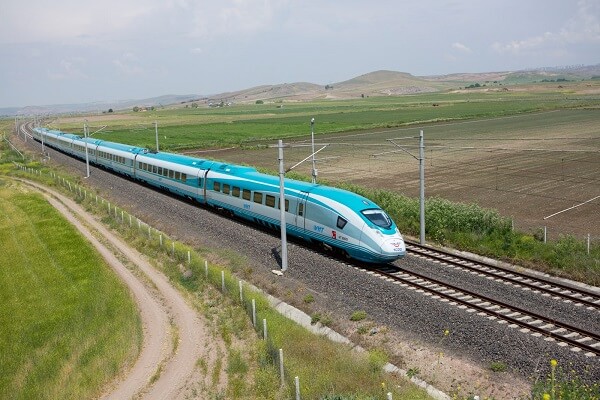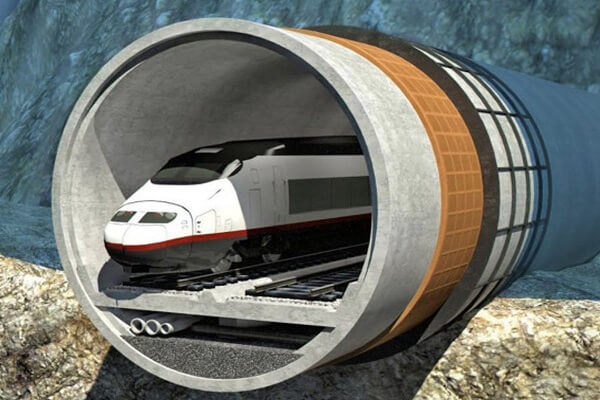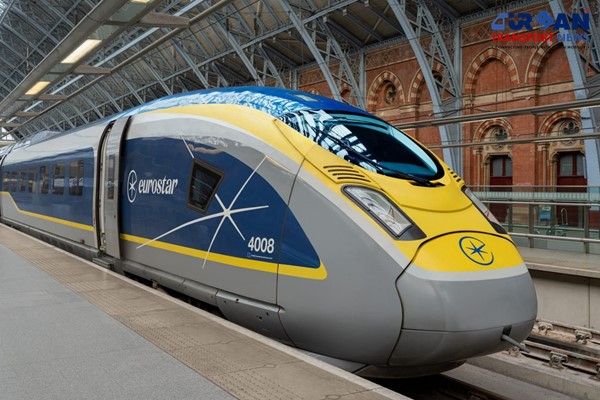 Delhi unveils ambitious Urban Mobility Vision: Luxury Metro Coaches, New Tunnels and Pod Taxi
Delhi unveils ambitious Urban Mobility Vision: Luxury Metro Coaches, New Tunnels and Pod Taxi Qatar approves Saudi Rail Link Agreement, Accelerating Gulf Railway Vision 2030
Qatar approves Saudi Rail Link Agreement, Accelerating Gulf Railway Vision 2030 UP Govt plans to introduce Water Metro services in Ayodhya, Varanasi & Prayagraj
UP Govt plans to introduce Water Metro services in Ayodhya, Varanasi & Prayagraj India’s First Urban Ropeway begins Trial Run in Varanasi, Set to carry 1 Lakh passengers daily
India’s First Urban Ropeway begins Trial Run in Varanasi, Set to carry 1 Lakh passengers daily India and Bhutan to Build First-Ever Rail Link: ₹4,033 Cr Project to Boost Regional Connectivity
India and Bhutan to Build First-Ever Rail Link: ₹4,033 Cr Project to Boost Regional Connectivity Patna to launch Eco-Friendly Water Metro; Trial Run soon between Digha and Kangan Ghats
Patna to launch Eco-Friendly Water Metro; Trial Run soon between Digha and Kangan Ghats Air India Group set to launch Flights Operations from Navi Mumbai International Airport
Air India Group set to launch Flights Operations from Navi Mumbai International Airport Chennai to launch 25-Year Mobility Plan with Unified QR Ticketing and One-App Transit System
Chennai to launch 25-Year Mobility Plan with Unified QR Ticketing and One-App Transit System Kochi Metro bags ₹4.4 crore contract to prepare DPR for Mumbai Water Metro Proejct
Kochi Metro bags ₹4.4 crore contract to prepare DPR for Mumbai Water Metro Proejct Navi Mumbai International Airport set for September launch; IndiGo and Akasa Air to lead Operations
Navi Mumbai International Airport set for September launch; IndiGo and Akasa Air to lead Operations
Railway Ministry commences survey for 459 km Delhi-Amritsar High Speed Rail Corridor

New Delhi, India (Urban Transport News): In a significant development for the transportation infrastructure of India, the Union Ministry of Railways has embarked on a comprehensive socio-economic survey in the state of Punjab. The purpose of this survey is to lay the groundwork for the construction of a high-speed railway corridor that will seamlessly connect three major cities - Delhi, Chandigarh, and Amritsar. This ambitious project is poised to bring about a revolutionary change in connectivity and reduce travel times drastically.
Land Acquisition Process Awaits Survey Completion
The first crucial step towards the realization of this high-speed railway corridor is the socio-economic survey being conducted in Punjab. It is only after the completion of this survey that the land acquisition process for the corridor will kick into action. This careful approach is designed to ensure that the project respects the socio-economic and environmental factors of the region.
IIM-Research Takes Charge of the Survey
The responsibility for conducting the socio-economic survey has been entrusted to IIM-Research, headquartered in New Delhi. This esteemed institution is overseeing the comprehensive assessment that will pave the way for the high-speed rail network. Key features of this railway corridor include a dedicated 55-feet wide railway track tailored to accommodate bullet trains, which are anticipated to operate at a breathtaking speed of 320 kilometers per hour. The promise of this high-speed rail system is nothing short of remarkable: a reduction of the travel time between Amritsar and Delhi from a lengthy five hours to a mere two hours.
Engaging with Local Communities
To carry out this intricate survey, IIM-Research has assembled 12 dedicated teams. These teams have been dispatched to the Fatehgarh Sahib and Mohali districts to interact with residents whose land may be acquired for this monumental project. Mahendra Pratap, a representative of IIM-Research, currently conducting the survey in Dadiana village within the Fatehgarh Sahib district, shared that their primary mission is to acquire agricultural land. They are meticulously assessing whether the land acquisition will encompass houses, tube wells, trees, and whether the affected residents heavily depend on the land for their livelihood. It's worth noting that the final acquisition decisions will take all of these factors into careful consideration.
Extensive Land Acquisition and Compensation Plans
The scale of this project is indeed grand, as the land of 365 villages is expected to be acquired to bring this high-speed railway corridor to life. Residents affected by the land acquisition will be offered compensation approximately five times the collector's rate of the land. This generous compensation scheme underscores the government's commitment to ensuring a fair and equitable transition for those impacted. Additionally, if half of the residents in a village express objections to land acquisition, the project may be relocated to an alternate village. To ensure safety, the corridor will be equipped with fencing on both sides, a necessary precaution given the train's maximum speed of 350 kilometers per hour.
Key Stops and Infrastructure Considerations
Once commissioned, the high-speed rail will commence its journey from Dwarka in Delhi, making strategic stops at significant locations along the route, including Sonepat, Panipat, Kurukshetra, Ambala, Mohali, Ludhiana, Jalandhar, and finally, Amritsar. To accommodate the high-speed requirements of this dedicated corridor, a separate survey is being conducted in Mohali to determine the most suitable location for a railway station.
Progress and Future Milestones
While soil testing for the project remains pending, it's important to note that feasibility and geographical surveys have already been successfully completed. The railways are actively collecting crucial details regarding the land that will need to be acquired. This ambitious high-speed railway corridor holds the promise of revolutionizing connectivity between the bustling metropolis of Delhi and the historically significant city of Amritsar. Beyond reducing travel time, it is poised to significantly enhance transportation efficiency in the region, providing a quantum leap in accessibility and convenience.
Conclusion
As the socio-economic survey gets underway and preparations for land acquisition proceed, the high-speed railway corridor linking Delhi, Chandigarh, and Amritsar is on track to become a transformative force in Indian transportation infrastructure. With the potential to drastically reduce travel times and improve connectivity, this ambitious project is set to shape the future of transportation in the region.







